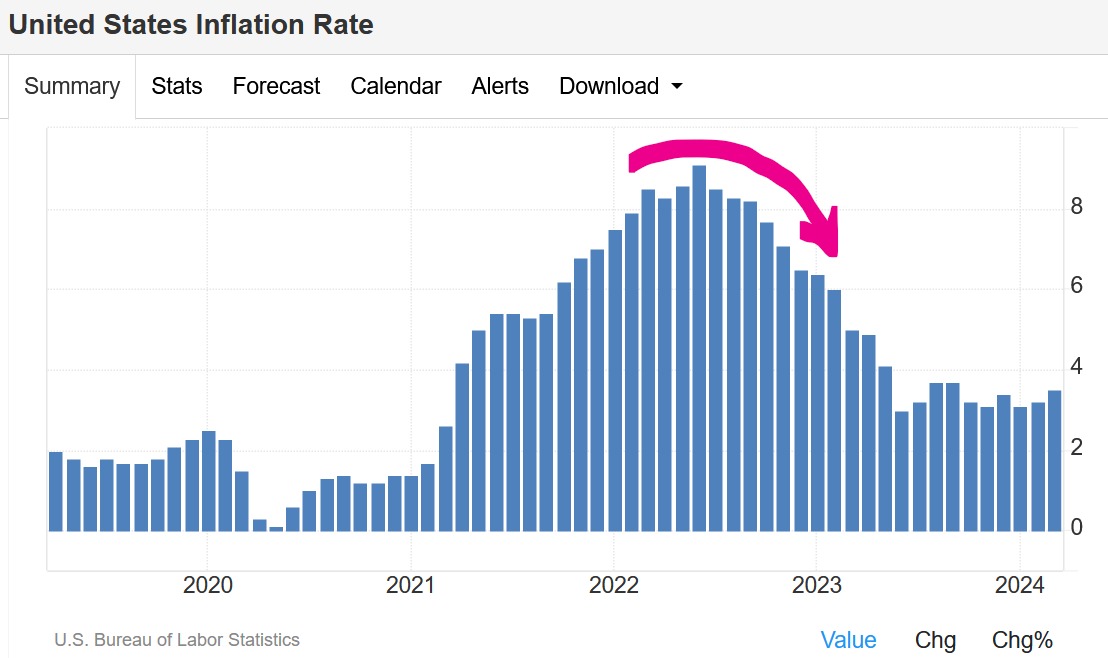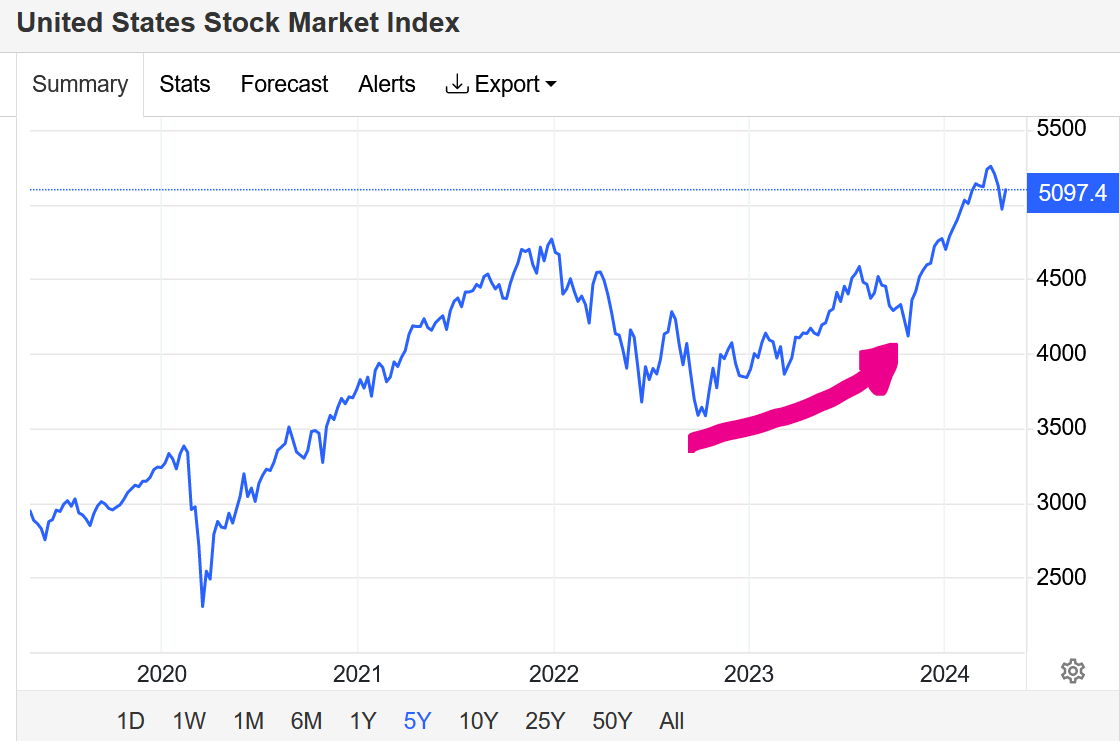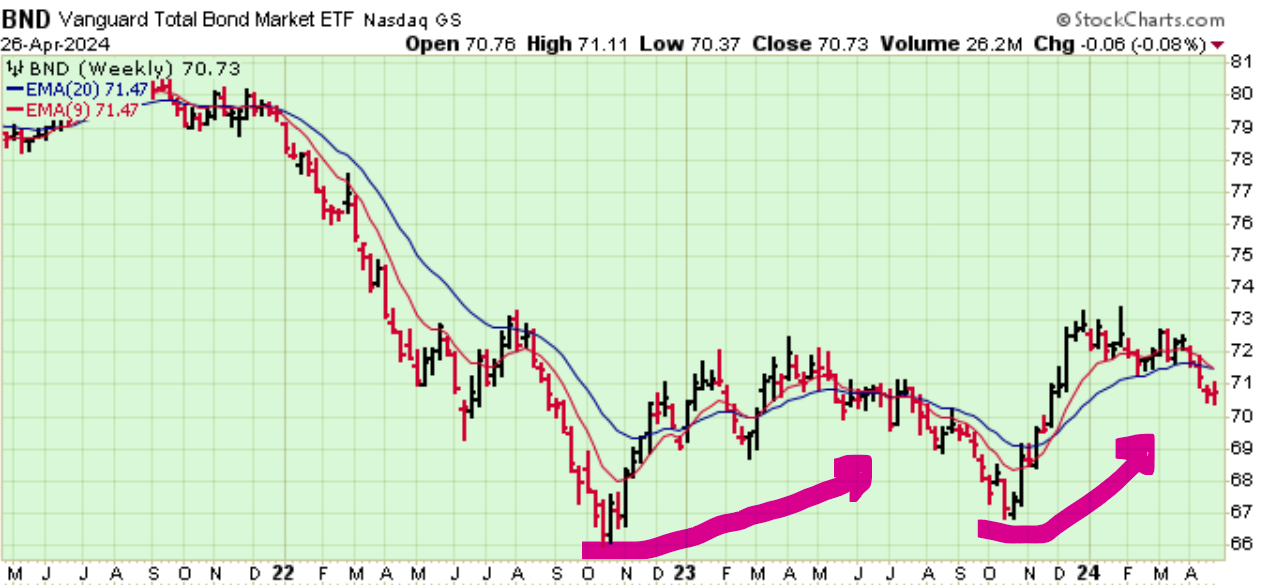
TIME FOR A BREAK
BOOM is taking a short, well earned break over the next 2 weeks. Holidays are important to re-charge the batteries. During this period, BOOM will publish some previous editorials which readers should hopefully find of great interest.
Firstly, a few things of great economic interest occurred last week.
GREECE POPULATION COLLAPSE HAS ECONOMIC CONSEQUENCES
The population decline in Greece has reached alarming levels, and it could become the world’s first country to suffer “population collapse”, a new report has said. This started a debate on social media, with billionaire Elon Musk joining in and expressing concern. The report paints a scary picture claiming that heart failure, stroke, blood clots and cancer among otherwise healthy young people have caused the mortality rates to skyrocket in Greece. Prime Minister Kyriakos Mitsotakis called the prospect of population collapse a “ticking time bomb” and a “national threat”. Greece’s birth rate fell by 30 per cent from 2011 to 2021 to under 84,000 per year, slipping below the death rate, according to the country’s national Hellenic Statistical Service, also known as ELSTAT.
“This is one of the most serious problems we face not only in Greece but in the EU as a whole,” Finance Minister Kostis Hatzidakis said last week, referring to the rapidly declining population in his country.
THE DISASTER OF ZIMBABWE’S NEW “DIGITAL CURRENCY” – THE Zig ZIMBABWE “GOLD”
The government and central bank of Zimbabwe does not understand the key principle of issuing a national currency. ALL OTHER currencies must be banned from use under threat of severe fines and/or long jail terms. Such a ban must be rigidly enforced. Now they have decided to issue a currency “backed by gold”. This will be yet another monetary disaster for the people of Zimbabwe. BOOM can guarantee that. “Backing” any currency with a limited supply of any commodity will always fail.The ZiG is the name of Zimbabwe’s new currency which was introduced out of the blue on the 5th of April. The name stands for Zimbabwe Gold. No one was given any notice about the ZiG because banks, shops, businesses, utility providers and communication networks all went into an instant spiral. Everyone was in the dark. Chaos was inevitable. The stock market immediately crashed 99 %.Apparently a statement from the Reserve Bank of Zimbabwe (the central bank) said that the existing currency known as ZWL, RTGS or Bond Dollars would cease to be legal in 21 days’ time. They instructed everyone to hand in all bank notes and change. It has been reported that transactions via bank cards, internet banking, phone-banking or mobile money platforms all crashed. Bank issued debit and credit cards suddenly didn’t work. Internet banking didn’t work. Phone banking didn’t work. The result was that people could not pay their bills, buy food or get medical help. Some people apparently received this message from their bank — “Dear Customer. Our ZWL platforms are down to allow for currency changeover. We will advise once service has been restored.” Four days later the platforms were still down and customers still had no access to their money. The banks then sent this notice: “Dear Customer our conversion to ZiG is still ongoing. Thank you for your patience.”This underlines what BOOM has repeated many, many times to readers —A nation must NEVER allow circulation and general acceptance of any foreign currency.
Citizens must NEVER surrender their right to physical cash. They must use physical cash every day and keep using it to preserve that right to interest free, sovereign money. Citizens must NEVER accept a central bank issued “digital currency” which can be a rival to physical cash. A nation’s currency is the peoples’ currency. Currency is determined and issued by the State, not by the central bank (except in a Communist nation)
RUSSIAN ECONOMY STRONG – SANCTIONS BACKFIRE
Western economic sanctions against Russia continue to backfire as expected by BOOM.
A Quote from the IMF analyst, Alfred Kammer, last week :— “What we have been forecasting for Russia is actually growth this year, and we also have seen quite strong growth last year, that was explained by economic activity that has remained strong because oil export volumes remained while prices were high”.
Kammer is the Director of the European Department at the International Monetary Fund since August 2020. The IMF has upgraded its growth estimate for the Russian economy, expecting the country’s GDP to expand by 3.2% this year, up from its January projection of 2.6%. Its latest projections put Russia ahead of a number of major Western economies in terms of growth this year, including the US (2.7%), UK (0.5%), France (0.7%), and Germany (0.2%). Russia’s Economy Ministry expects GDP growth this year to come in at 3.6%, the same as last year.
Now — BACK TO THE PAST — A SELECTION OF PREVIOUS BOOM EDITORIALS
From October 7th 2023 —
THE DISASTROUS FAILURE OF NIGERIA’S CENTRAL BANK DIGITAL CURRENCY – THE eNAIRA
The eNAIRA is Nigeria’s failed Central Bank Digital Currency (CBDC) experiment, launched in October 2021.
The eNaira was not based upon an interest bearing debt contract which means that it was meant to exist more as a form of electronic cash. Disastrously, the Government deliberately decided to restrict and withdraw physical cash as a key part of the experiment. That was a very grave mistake, similar to what had happened in India previously in 2016 when the Indian Government instantly removed 86 % of physical cash from circulation. This plunged the poor of India into a huge crisis and a desperate search for survival.
But Nigeria’s central bank and government ignored all of that. And that is not all they ignored.
Cash is the People’s money, non interest bearing and anonymous which must be made available by the Government upon demand from the People. That is what all of monetary history tells us. To ignore such is to court social, financial and economic disaster.
In Nigeria, the rationale for the eNAIRA was threefold —
1. To increase financial inclusion. 38 Million people in Nigeria do not have a bank account.
2. To reduce the cost of foreign remittances. Money transfers from Nigerians working in foreign countries amounted to $ 24 Billion in 2019. They pay commissions of up to 8 % to do that. The eNAIRA was supposed to make that far cheaper and more convenient.
3. To reduce the black market economy where Cash is used as settlement.

The eNAIRA was supposedly a solution to these “problems” as envisaged by the Central Bank of Nigeria. However, the “problems” did not exist in the minds of the people. The three goals overlooked three important facts about many Nigerians —
1. They can and do live quite happily without bank accounts
2. They don’t want Big Brother watching their remittances
3. They don’t want to lose their Black Market economy, based upon Cash.
Of course, the protagonists of the eNAIRA made the proposition right at the outset that there is such a thing as a “Cashless Trend”, an inevitable move towards cash free economies. This is a common theme in monetary circles promulgated principally by bankers (who make zero profit from cash; in fact, it is a cost centre for them) and totalitarian governments (who want to peer into every citizen’s financial affairs). The unelected IMF and the unelected WEF (World Economic Forum) also promote such falsehoods. However, BOOM cannot find a demand from the people to eliminate cash. Anywhere.
Of course, the big question to be answered is this – how popular has it been?
The answer, according to an IMF Paper released in early May, is that “the take-up of the eNaira by households and merchants in Nigeria has been slow”.
That is a gross exaggeration. The total population of Nigeria is 224 Million people. After an initial surge of wallet downloads, the uptake was very slow indeed.
After 12 months, there were 860,000 retail wallets downloaded (retail – meaning in the hands of individuals) and the vast majority of those were downloaded at the very outset with relatively few being loaded each month as the year progressed. That represents 0.35 % of the population. That is 0.8 % of Nigeria’s active bank accounts. And only 10 % of merchants with suitable equipment had downloaded a merchant wallet.
But it’s actually worse than that. Disastrous, in fact. 98.5 % of the retail wallets that were downloaded were not used even once. And the average total value of eNaira transactions was 923 million Naira per week — 0.0018 % of the average amount of M3 Money during that 12 month period.
These are disastrous figures. It represents an almost complete failure of acceptance. In the (real) world of money, General Acceptance is the Sine Qua Non. Without general acceptance then whatever is being used is not money by definition — no matter how theoretically sound it may appear.

CENTRAL BANK DIGITAL CURRENCIES CANNOT SUCCEED – THEY ARE INTELLECTUALLY BANKRUPT
At the end of May this year, the President of Nigeria, Bola Tinubu, restored the validity of the old currency and issued fresh new physical bank notes. He ordered an investigation into the Central Bank of Nigeria (CBN) and, quite rightly, this resulted in the arrest and detention of the former CBN governor, Godwin Emefiele, on June 10, 2023. In late July the court released him from custody but the security service rearrested him and is holding him in custody. The investigation is ongoing as far as BOOM is aware.
BOOM suggests strongly to the Government of Nigeria to abandon the experiment completely and immediately. It is dangerous in the extreme to the Nigerian nation and to the national economy, especially if allowed to fester and undermine the social fabric of the nation.
A central bank issued currency CBDC should NEVER be contemplated. It suggests and provides a false alternative to the sovereignty of the nation and a threat to social cohesion. It arguably amounts to a Treasonous act, not dissimilar to the adoption of a currency union. (Long term readers will know that BOOM is not a fan of currency unions either such as the Euro).
General Acceptance of a currency MUST originate and reach fulfilment in and from the People for it to be a successful reflection of social bonds. From first principles, it cannot be imposed upon the People by a non representative body such as a central bank or the IMF or the World Economic Forum WEF (or, by the way, by a mysterious Japanese figure claiming the name of Satoshi Nakamoto).
The stakes are high in this game. If a CBDC is launched and is seen by the people as not emanating from them and is perceived to be an alternative to their national currency, then it will potentially threaten the acceptance of that national currency.
Trust in government and in the institution of the central bank will be simultaneously weakened. In such a circumstance, the people may decide to generally accept another currency of convenience, such as the US Dollar or any other currency readily available of a neighbouring State.
Or …. they may decide to overthrow the Government and charge the politicians and central bankers with Crimes against the State.
Social trust is hard won but can be quickly lost if the fundamental principles of what makes money be accepted as money are ignored. And especially so if a currency experiment is launched from unelected institutions above to solve problems that don’t exist in the minds of the People below.
BOOM awaits the day (which will never come) when the People of any nation demand the issuance of a currency by their unelected central bankers in opposition to the currency of the People, issued and overseen by their representative Government.
CBDCs may be popular among unelected central bankers, unelected WEF members and unelected IMF apparatchiks but money is ultimately a tool created by and for the People.
That fact must not be overlooked when monetary reform is being considered.
From BOOM on 7th May 2023 —
HOW SOUND MONEY POLICY FAILED TO PROTECT THE PEOPLE — THE PANIC OF 1837

It is fashionable to rage against central bankers and even commercial bankers with some people vehemently accusing them of creating most if not all of societies ills. It is time to re-consider a world of so-called “sound’ money, backed by gold and when there was no central bank. That world occurred in the 19th century in the United States. BOOM wrote much of this in June 2021.
Thanks for reading BOOM Finance and Economics Substack! Subscribe for free to receive new posts and support my work.
If you hate banks and bankers or if you are a true believer in the wisdom of governments or in the concept of “hard” (or “sound”) money, you should take a good hard look at The Panic of 1837 in the United States. An examination of the events leading up to the Panic and the events that occurred afterwards are worthy of your time. All of human history reveals that most Governments don’t understand money. And the idea that the concept of “soundness” can be used to somehow tame money creation is magical thinking in action. All forms of money are contracts of credit, based upon trust and enforced by social agreement. Human beings will always find ways to innovate in regard to contracts of credit. That is what the history of money tells us. Let’s look back to 1837.
It all started when the US President, Andrew Jackson, in his wisdom, effectively killed off the central bank which was then called the BUS — the Second Bank of the United States. That process started in 1833 but was not completed until 1836. The end of the central bank triggered a huge real estate boom as State based commercial banks issued credit money loans in large volumes to eager borrowers to purchase land. Is this sounding familiar?
The Government became concerned. So they issued the so-called “Specie Circular”, an executive order issued by President Andrew Jackson on July 11th 1836. He ordered that payments for the purchase of public lands be made exclusively in gold or silver. Jackson was a “hard” money man who was always suspicious of banks creating credit money loans without the “sound” backing of gold and silver. The idea of the “Specie Circular” was to squash “excessive” land speculation and the “excessive” growth of the credit money supply (bank loans).
Jackson directed the Treasury Department and banks to only accept specie (Gold or Silver) as payment for government-owned land after Aug. 15, 1836. However, settlers and residents of the state in which they purchased land were permitted to use “paper” money (bank credit) until December 15th on lots up to 320 acres. After that date, the Specie Circular effectively strangled the use of paper money. This caused a huge collapse of real estate prices. Buyers simply could not find sufficient gold or silver to settle purchases so they stopped buying. The banks had no option but to reduce credit creation dramatically and many banks then subsequently failed (as you would expect) due to loan defaults.
The Panic of 1837 started in April, one month after Martin Von Buren became President. It was an absolute economic disaster. By May 21, 1838, a joint resolution of Congress repealed the Specie Circular. The experiment with “sound” money was decisively over.
Interestingly, a central bank was not established after that debacle. During the period from 1836 – 1862, there were only State banks with no Federal Bank. This period is called the Free Banking Era. Bank notes had to be issued with gold or silver backing but loan books of credit money were allowed. More chaos ensued.
During the free banking era, state banks had an average life span of just 5 years. About half of the banks failed for the usual reason of loan defaults. But some failed because they had inadequate gold and silver with which to honor note redemptions. As a result some banks innovated and began to offer central banking services to other banks. Nonetheless, bank failures continued in huge numbers.
In 1863, the National Banking Act was passed, creating a system of Federal banks. And the office of Comptroller of the Currency was created to supervise those banks. A uniform national currency was also created. A huge bout of CPI inflation followed immediately with inflation hitting 24.6 % in 1864. By 1870, there were 1,638 national banks and only 325 state banks.
Inevitably, with no Central Bank to provide overnight support, liquidity mis-matches occurred and banks lost faith in each other. Mistrust ruled. Outright deflation hit and stayed for dinner (and beyond) from 1866 right through to 1897. Per capita GDP in the US rose very, very slowly from $ 4,700 to $ 7,200 over thirty long years. Much economic hardship was manifest. As sure as night follows day, bank runs occurred when depositors panicked about the security of their deposits. There were Banking Panics in 1873, 1884, 1893, 1896, 1901, 1907. Many, many banks failed, people lost their savings and deflationary real estate crashes occurred. This is what life is like without a central bank and with cash currency backed by Gold. In other words, in such a situation, credit money — created via commercial bank loans — rules the roost with no effective controls.
But what about the early years of the 19th century? Surely it was a golden era of “sound” money? Gold rushes in the early part of the 19th century triggered mass migrations as people desperately tried to dig money out of the ground. During the early years of the 19th century, there were banking crises in 1819, 1825, 1837, 1847 and 1857.
Almost the entire 19th century in the US were desperate times indeed. It was slowly becoming obvious that a central bank was needed to provide stability to a banking sector in which inter-bank trust was badly damaged.
The concept of “sound” money (backed by Gold) failed to protect the people in the 19th century. The fact is that humans need supervision in regard to money. Banks need to be supervised strictly and have access to overnight capital reserves. A central bank must maintain inter-bank trust and must stop excessive credit creation. Easy to say — not so easy to do.
The problem is that human beings run elected governments and central banks. They also run commercial banks. One nation attempted to rid itself of such beasts. It was called the USSR – the Union of Soviet Socialist Republics where there were no elections, no commercial banks and where a lone, all powerful central bank controlled the supply of money. That institution was appointed by a group of unelected tyrants in the Central Committee, unanswerable to the majority of the people. The experiment lasted 70 years. It ended when productivity eventually collapsed in a heap because nobody bothered to do any work, waiting for all their goods and services to be delivered by a benevolent central government. Utopia achieved.
Our governments, our central banks and our commercial banks are all potentially flawed institutions because they contain human beings. Trust in our national money systems and in our national currencies is critical to keep our social system from implosion. The alternative is economic and social chaos. Beware of anyone who attempts to destroy that trust. BOOM suggests reform as a better pathway, a better discussion.
AND — From BOOM on 16th October 2022 —
YES — written in October 2022
GOOD RESULTS IN US INFLATION OUTLOOK AND RETAIL SALES

In the last few weeks, BOOM suggested readers watch closely on 13th October and 14th October for the US data releases for September inflation and retail sales.
The annual inflation rate in the US slowed for the third month running to 8.2% in September, the lowest in seven months, compared to 8.3% in August. That was not a great result but it could have been far worse and suggests that the CPI inflation threat may be over its peak. The CPI Index was static for the 4th month at 296.8. The Core Inflation Rate rose by 6.6%, a touch above the expected consensus figure of 6.5%.
Cost of energy in the US increased at a slower 19.8% Year-on-Year in September, easing from a 23.8% rise in the previous month. That was the lowest reading since March of 2021, amid a further slowdown in gasoline costs (18.2% from 25.6% in August) and electricity (15.5% vs 15.8%). The cost of food fell (slightly). US consumer inflation expectations for the year ahead fell for a third consecutive month to 5.4% in September, the lowest in a year, from 5.7% in August.
Most of those results were relatively good news. Why? Because they could have been much worse. In response, the stock market roared upwards through the day. But, worryingly, services inflation increased to 7.37% in September from 6.81% in August. Services inflation must start to fall before the “all clear” can be reliably called.
The core PCE annual rate, which is the Federal Reserve’s preferred gauge of inflation, will be released on Friday 28th October. It rose slightly in August. If that falls in September, then everyone can breath more easily.
The US Retail Sales report came in at Zero growth, unchanged in September Month on Month. As the US economy is heavily reliant upon consumers, that is also a relatively good sign indicating a slowing of economic growth. Retail sales Year on Year fell to 8.2 % That is a promising result. Personal Spending numbers for September will also be released on the 28th October. If that falls in September, then everyone can breath more easily.
So, overall, the inflation statistics and retail sales figures were a good result, offering some firm evidence that the peak of CPI inflation may be in the past. If we are past the peak, then the prices of stocks and bonds should start to rise from here and the Federal Reserve can put further interest rate increases on hold or reduce the rate of rise. Watch closely for Core PCE inflation annual rate and Personal Spending releases on 28th October.
And since then — this is what happened since BOOM wrote that article.
The US Inflation Rate

2. The US Stock market

3. US BOND MARKET (BND — a broad Bond ETF)

In economics (and finance), things work until they don’t. Do your own research. Make your own conclusions. BOOM does not offer investment advice.
Thanks for reading BOOM Finance and Economics Substack.
Subscribe for Free to BOOM Finance and Economics at Substack
Disclaimer: All content is presented for educational and/or entertainment purposes only. Under no circumstances should it be mistaken for professional investment advice, nor is it at all intended to be taken as such. The commentary and other contents simply reflect the opinion of the authors alone on the current and future status of the markets and various economies. It is subject to error and change without notice. The presence of a link to a website does not indicate approval or endorsement of that web site or any services, products, or opinions that may be offered by them.
Neither the information nor any opinion expressed constitutes a solicitation to buy or sell any securities nor investments. Do NOT ever purchase any security or investment without doing your own and sufficient research. Neither BOOM Finance and Economics.com nor any of its principals or contributors are under any obligation to update or keep current the information contained herein. The principals and related parties may at times have positions in the securities or investments referred to and may make purchases or sales of these securities and investments while this site is live. The analysis contained is based on both technical and fundamental research.
Although the information contained is derived from sources which are believed to be reliable, they cannot be guaranteed.
Disclosure: We accept no advertising or compensation, and have no material connection to any products, brands, topics or companies mentioned anywhere on the site.
Fair Use Notice: This site contains copyrighted material the use of which has not always been specifically authorized by the copyright owner. We are making such material available in our efforts to advance understanding of issues of economic and social significance. We believe this constitutes a ‘fair use’ of any such copyrighted material as provided for in section 107 of the US Copyright Law. In accordance with Title 17 U.S.C. Section 107, the material on this site is distributed without profit. If you wish to use copyrighted material from this site for purposes of your own that go beyond ‘fair use’, you must obtain permission from the copyright owner.
Subscribe to BOOM Finance and Economics at Substack
By Dr Gerry Brady
BOOM has developed a loyal readership over 5 years which includes many of the world’s most senior economists, central bankers, fund managers and academics.